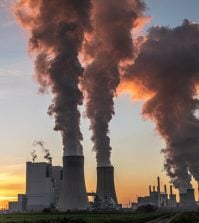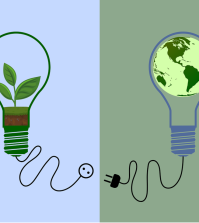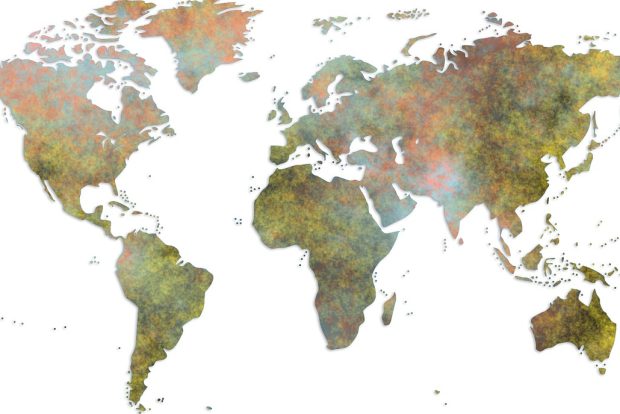Water resilience: why we must take a new approach to preserving a shrinking resource

In the UK, it is easy to take water and its free availability for granted. The reality, however, that water is a precious and finite resource is something we simply cannot ignore for much longer.
It has been abundantly recited in recent years, and especially in light of COP26 and heightened action to achieve net zero carbon emissions, that climate change is now a pressing problem – indeed the most urgent challenge of our generation. The effects of global warming are already damaging the world we live in and will continue to do so, even if all countries do commit to ambitious pledges to limit global temperature rise to no more than 1.5 degrees. Whatever happens next, the world as we know it is changing and we must protect our natural resources and work on better ways to store them.
The extreme weather that comes with climate change has made water supply much more unpredictable than in years gone by. This is visibly apparent in many areas of the globe, including across parts of the African continent. However, in the future, the subject of drought will become an increasingly realistic prospect for many other regions around the world.
The UK’s reputation as a rainy climate distracts many observers from how the relationship between rainfall and the water available to us really works. Indeed, the Environment Agency predicts that many parts of the UK will face significant water deficits by 2050, with the amount of water available reducing by up to 10-15% and some rivers seeing 50%-80% less water during the summer months.
Water is also intrinsically linked to energy. Most people underestimate the energy that water companies need to treat and pump water into homes. In fact, Scottish Water is the largest user of electricity in Scotland. By comparison, water is also an intrinsic part of the energy production process, with huge amounts of water needed to produce electricity.
To make matters worse, daily household water usage almost doubled between the 1960s and 2020, from 85 litres to 143 litres per person. And as the UK population continues to grow – due to rise from 67 million now to 75 million in 2050 – water demand is set to rise even further. We must make the most of what we have in order to create resilience in our supply.
Smart Metering
In terms of water preservation, the installation of smart meters in homes enables utility companies to provide historical data as well as a breakdown of consumption processes that use water, helping customers identify water efficiencies in homes, set water saving goals, and enable quick detection of water losses in the system.
But whilst metering is an important step forward, given the complexity of the problem of maintaining a sustainable supply in the changing world, we will have to go much further.
The reality is that water companies capture much less rain for our use than people commonly assume, with parts of the UK already subject to water stress, especially in the south of England. In fact, 15 out of the 23 water companies operating in areas of England are rated as being under ‘serious’ stress. This requires us to find innovative solutions to what are complex problems.
A holistic approach to the management of all water resources is critical to safeguarding long term water resilience. This means valuing every source of water and re-using where possible, including rainwater, greywater and even (black) wastewater. Not all water uses require energy intensive treatment to ensure it reaches potable, drinking water standards.
A good example of this is WSP’s work to support Affinity Water, Severn Trent Water & the Canal & River Trust to explore the utilisation of the Grand Union Canal to provide a future, more resilient, water supply for people and the environment.
Water neutrality
The concept of water neutrality is that total demand for water within a planning area after development takes place is the same or less than it was before work began. This can be achieved via a combination of: reducing water use by making the new build as water efficient as possible; installing water reuse systems, such as rainwater harvesting or grey water recycling, and; offsetting any remaining demand in the existing local region. Achieving water neutrality in new homes will also yield significant gains too in terms of saving energy, reducing carbon footprint and enhancing biodiversity. By reducing potable water demand through efficiencies such as leakage reduction, smart metering and fitting of water efficient appliances; alongside reuse of rainwater, greywater and (black) wastewater, total water demand is thereby kept to a minimum.
To drive forward this water neutral approach, effective collaboration between water companies, local authorities and regulators is key. Socially responsible, water resilient development will require both a robust planning system and appropriate incentives such as targeted funding or grants.
Collective Responsibility
As water demand increases and existing water resources are further stretched, we all need to invest and embrace what’s required to create a water neutral future.
Water availability is a layered issue that demands a coordinated local, national and global effort to protect resources and ensure equitable distribution, whilst adapting communities to make them more resilient to floods and other impacts intensified by climate change.
To put all of this in context, the UK has legislated to reach net zero by 2050. In meeting this challenging target, it is crucial to understand that net-zero water and net-zero carbon go hand in hand; it’s not an either-or scenario. In addition to good management of its supply, the other crucial component for water is to adequately measure and reduce carbon emissions at each stage of our water’s life cycle – from the materials and energy we use to abstract, store, transport, treat and recycle water.

Author: Simon Gilliland, Business Growth Leader for Water for WSP, one of the UK’s largest engineering professional services consultancies
To find out more about how WSP is helping clients and communities on projects in the Water sector, or to get in touch, please visit our Water Resilience webpage here.

















